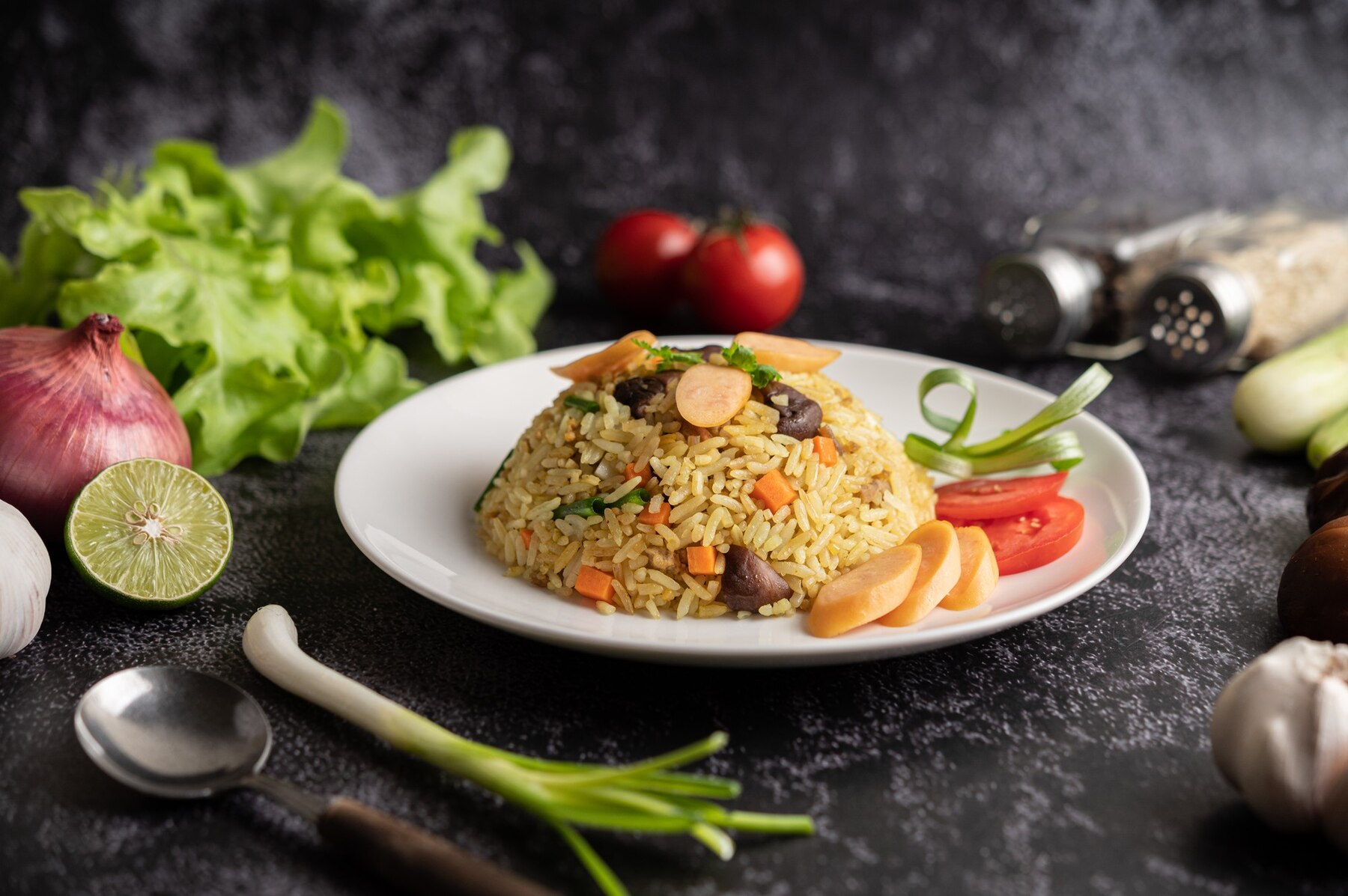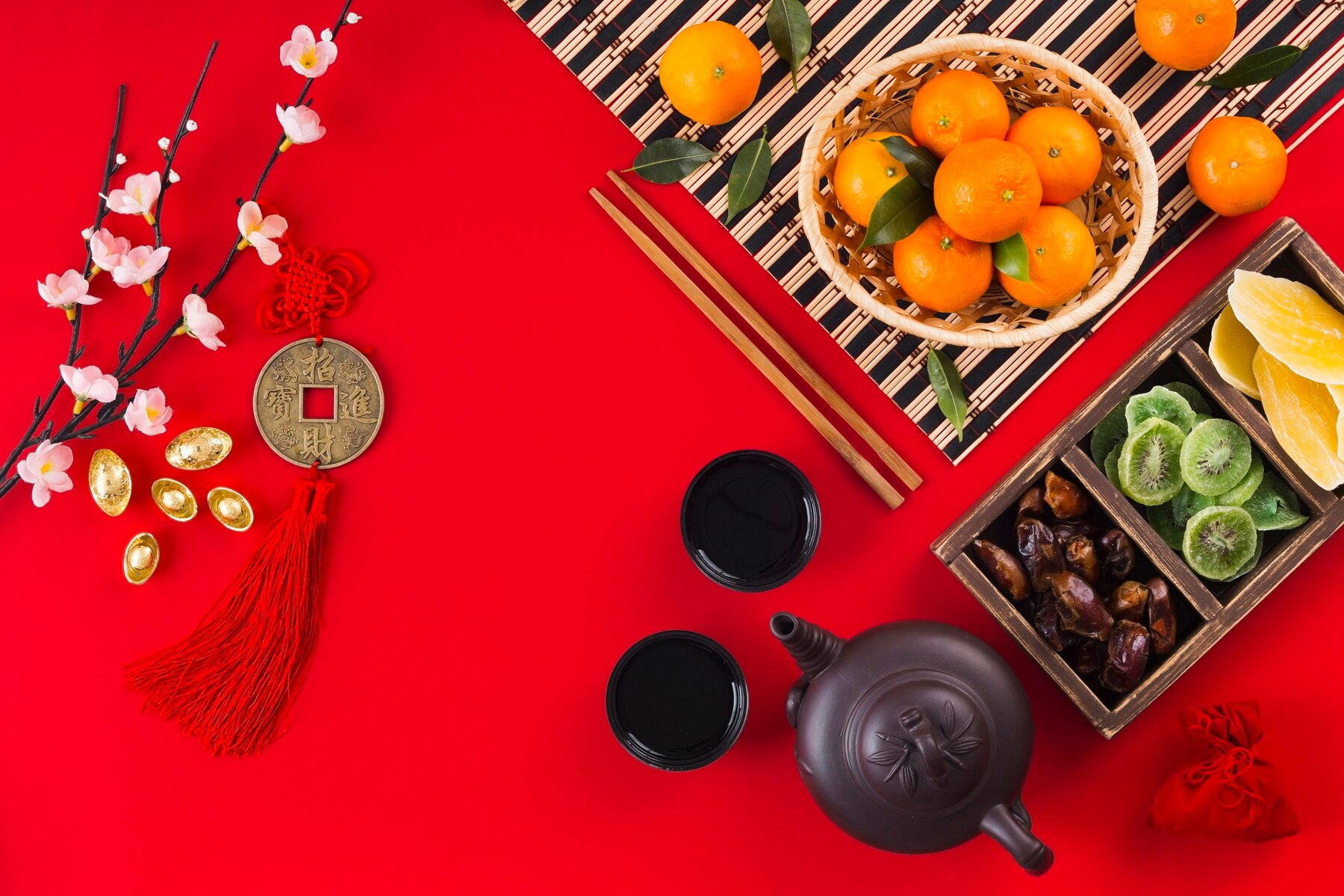Fried rice is a versatile and beloved dish that has found its way into kitchens around the world. Originating from China, this dish has countless variations, each with its unique flavor profile and ingredients. Whether you prefer a simple vegetable fried rice or a more elaborate seafood version, the key to perfect fried rice lies in the technique and the balance of flavors. In this guide, we’ll explore the essential steps to making the best-fried rice we approach at Solanas and offer several delicious recipes to try at home.
Read More on Kung Pao Chicken Recipe
Essential Tips for Making Perfect Fried Rice
- Use Day-Old Rice: The secret to great fried rice is using cold, day-old rice. Freshly cooked rice is too moist and can become mushy when fried. Day-old rice has a firmer texture, which helps achieve the desired grain separation.
- High Heat Cooking: Cooking fried rice over high heat ensures that the ingredients are cooked quickly and evenly. It also helps to develop a slight char on the rice, adding to the flavor.
- Prep All Ingredients Beforehand: Fried rice cooks quickly, so it’s essential to have all ingredients prepped and ready to go before you start cooking. This includes chopping vegetables, beating eggs, and measuring out sauces.
- Use a Wok or a Large Skillet: A wok is ideal for making fried rice due to its high sides and ability to distribute heat evenly. However, a large skillet can also work well.
- Seasonings and Sauces: Soy sauce, oyster sauce, and sesame oil are commonly used in fried rice. Adjust the quantities based on your taste preferences. Adding a little sugar can also balance the flavors.
Basic Fried Rice Recipe
Ingredients:
- 3 cups day-old cooked rice
- 2 tablespoons vegetable oil
- 2 eggs, beaten
- 1 small onion, diced
- 2 garlic cloves, minced
- 1 cup mixed vegetables (carrots, peas, corn)
- 3 tablespoons soy sauce
- 1 tablespoon oyster sauce
- 1 teaspoon sesame oil
- Salt and pepper to taste
- 2 green onions, chopped
Instructions:
- Prepare the Rice: Break up any clumps in the day-old rice using a fork or your hands. Set aside.
- Cook the Eggs: Heat 1 tablespoon of vegetable oil in a wok over medium-high heat. Add the beaten eggs and scramble until fully cooked. Remove from the wok and set aside.
- Stir-Fry the Aromatics: Add the remaining tablespoon of oil to the wok. Add the diced onion and garlic, stir-frying until fragrant and translucent, about 2 minutes.
- Add Vegetables: Add the mixed vegetables to the wok and stir-fry for 3-4 minutes until they are tender but still crisp.
- Combine Ingredients: Add the day-old rice to the wok, breaking up any remaining clumps. Stir well to combine with the vegetables.
- Season the Rice: Pour the soy sauce, oyster sauce, and sesame oil over the rice. Stir well to ensure even distribution of the sauces. Season with salt and pepper to taste.
- Add Eggs and Green Onions: Return the scrambled eggs to the wok, breaking them up into smaller pieces. Add the chopped green onions and stir everything together until heated through.
- Serve: Serve the fried rice hot, garnished with additional green onions if desired.
Chicken Fried Rice Recipe
Ingredients:
- 2 cups cooked chicken, shredded or diced
- 3 cups day-old cooked rice
- 2 tablespoons vegetable oil
- 2 eggs, beaten
- 1 small onion, diced
- 2 garlic cloves, minced
- 1 cup mixed vegetables (carrots, peas, corn)
- 3 tablespoons soy sauce
- 1 tablespoon oyster sauce
- 1 teaspoon sesame oil
- Salt and pepper to taste
- 2 green onions, chopped
Instructions:
- Prepare the Rice: Break up the day-old rice using a fork or your hands. Set aside.
- Cook the Eggs: Heat 1 tablespoon of vegetable oil in a wok over medium-high heat. Add the beaten eggs and scramble until fully cooked. Remove from the wok and set aside.
- Stir-Fry the Aromatics: Add the remaining tablespoon of oil to the wok. Add the diced onion and garlic, stir-frying until fragrant and translucent, about 2 minutes.
- Add Vegetables and Chicken: Add the mixed vegetables and cooked chicken to the wok. Stir-fry for 3-4 minutes until the vegetables are tender and the chicken is heated through.
- Combine Ingredients: Add the day-old rice to the wok, breaking up any remaining clumps. Stir well to combine with the chicken and vegetables.
- Season the Rice: Pour the soy sauce, oyster sauce, and sesame oil over the rice. Stir well to ensure even distribution of the sauces. Season with salt and pepper to taste.
- Add Eggs and Green Onions: Return the scrambled eggs to the wok, breaking them up into smaller pieces. Add the chopped green onions and stir everything together until heated through.
- Serve: Serve the chicken fried rice hot, garnished with additional green onions if desired.
Shrimp Fried Rice Recipe
Ingredients:
- 500g shrimp, peeled and deveined
- 3 cups day-old cooked rice
- 2 tablespoons vegetable oil
- 2 eggs, beaten
- 1 small onion, diced
- 2 garlic cloves, minced
- 1 cup mixed vegetables (carrots, peas, corn)
- 3 tablespoons soy sauce
- 1 tablespoon fish sauce
- 1 teaspoon sesame oil
- Salt and pepper to taste
- 2 green onions, chopped
Instructions:
- Prepare the Rice: Break up the day-old rice using a fork or your hands. Set aside.
- Cook the Eggs: Heat 1 tablespoon of vegetable oil in a wok over medium-high heat. Add the beaten eggs and scramble until fully cooked. Remove from the wok and set aside.
- Stir-Fry the Aromatics: Add the remaining tablespoon of oil to the wok. Add the diced onion and garlic, stir-frying until fragrant and translucent, about 2 minutes.
- Add Vegetables and Shrimp: Add the mixed vegetables and shrimp to the wok. Stir-fry for 3-4 minutes until the vegetables are tender and the shrimp are pink and cooked through.
- Combine Ingredients: Add the day-old rice to the wok, breaking up any remaining clumps. Stir well to combine with the shrimp and vegetables.
- Season the Rice: Pour the soy sauce, fish sauce, and sesame oil over the rice. Stir well to ensure even distribution of the sauces. Season with salt and pepper to taste.
- Add Eggs and Green Onions: Return the scrambled eggs to the wok, breaking them up into smaller pieces. Add the chopped green onions and stir everything together until heated through.
- Serve: Serve the shrimp fried rice hot, garnished with additional green onions if desired.
Vegetable Fried Rice Recipe
Ingredients:
- 3 cups day-old cooked rice
- 2 tablespoons vegetable oil
- 2 eggs, beaten
- 1 small onion, diced
- 2 garlic cloves, minced
- 1 cup mixed vegetables (carrots, peas, corn)
- 1/2 cup broccoli florets
- 1/2 cup diced bell peppers
- 3 tablespoons soy sauce
- 1 tablespoon hoisin sauce
- 1 teaspoon sesame oil
- Salt and pepper to taste
- 2 green onions, chopped
Instructions:
- Prepare the Rice: Break up the day-old rice using a fork or your hands. Set aside.
- Cook the Eggs: Heat 1 tablespoon of vegetable oil in a wok over medium-high heat. Add the beaten eggs and scramble until fully cooked. Remove from the wok and set aside.
- Stir-Fry the Aromatics: Add the remaining tablespoon of oil to the wok. Add the diced onion and garlic, stir-frying until fragrant and translucent, about 2 minutes.
- Add Vegetables: Add the mixed vegetables, broccoli florets, and bell peppers to the wok. Stir-fry for 3-4 minutes until the vegetables are tender but still crisp.
- Combine Ingredients: Add the day-old rice to the wok, breaking up any remaining clumps. Stir well to combine with the vegetables.
- Season the Rice: Pour the soy sauce, hoisin sauce, and sesame oil over the rice. Stir well to ensure even distribution of the sauces. Season with salt and pepper to taste.
- Add Eggs and Green Onions: Return the scrambled eggs to the wok, breaking them up into smaller pieces. Add the chopped green onions and stir everything together until heated through.
- Serve: Serve the vegetable fried rice hot, garnished with additional green onions if desired.
The Final Word:
Fried rice is a versatile and delicious dish that can be customized to suit any taste. By following these essential tips and trying out the various recipes, you can create restaurant-quality fried rice at home. Whether you prefer a simple vegetable version or a more elaborate chicken or shrimp fried rice, these recipes are sure to impress. Craving authentic fried rice? Look no further! Visit Solanas, the best thai-chinese restaurant for delicious dishes made with fresh ingredients. We’ll satisfy your fried rice desires!
Discover More on Our Catering Services
FAQs:
1. Can I use freshly cooked rice for fried rice?
It’s best to use day-old rice for fried rice. Freshly cooked rice is too moist and can become mushy. Day-old rice has a firmer texture that helps achieve the desired grain separation.
2. How do I prevent my fried rice from sticking to the wok?
Ensure your wok or skillet is preheated and well-oiled before adding ingredients. Using day-old rice and cooking over high heat also helps prevent sticking.
3. Can I make fried rice without soy sauce?
Yes, you can substitute soy sauce with alternatives like tamari, coconut aminos, or liquid aminos for a similar umami flavor. For a different taste, you can also use hoisin sauce, fish sauce, or even a bit of salt.
4. What vegetables can I add to fried rice?
Common vegetables include carrots, peas, corn, bell peppers, and broccoli. Feel free to add other vegetables like snap peas, mushrooms, zucchini, or baby corn based on your preference.
5. How can I make my fried rice more flavorful?
Enhance the flavor by adding aromatics like garlic, onion, and ginger. Using a combination of sauces like soy sauce, oyster sauce, and sesame oil adds depth. Garnishing with green onions and a squeeze of lime juice can also elevate the taste.

